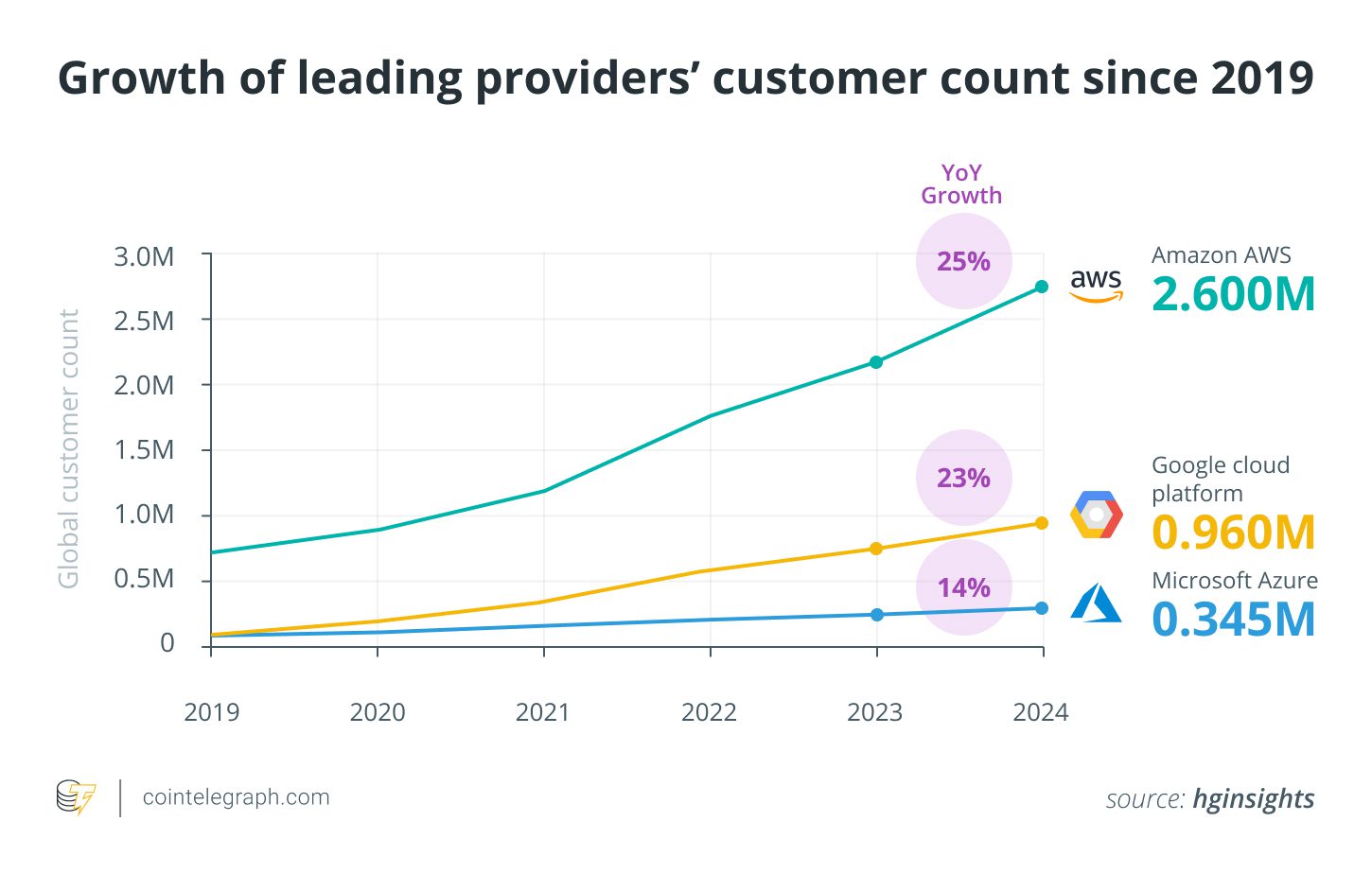The rapid advancements in cloud computing and artificial intelligence have fundamentally reshaped business operations. However, the concentration of these technologies within a few major tech companies presents significant challenges. This article examines the risks of centralization and explores the potential of decentralized solutions to unlock greater innovation and resilience.
The Dominance of Centralized Cloud Providers
The cloud computing market is heavily dominated by Amazon Web Services (AWS), Microsoft Azure, and Google Cloud Platform. These three companies collectively control a substantial portion of the global cloud infrastructure. This concentration of power raises several concerns, including:
- Reduced Innovation: Dominant providers can stifle innovation by limiting options and imposing restrictions on businesses.
- Political Vulnerability: Reliance on a single provider can expose companies to political pressures and service disruptions based on content or policy disagreements.
- Compliance Challenges: Organizations with data centers in regions with varying legal standards face regulatory and compliance difficulties, especially concerning data protection regulations like GDPR.
The Impact of Centralization on Cloud Computing and AI
Centralization in cloud computing and AI poses several critical challenges that can hinder innovation, create vulnerabilities, and increase operational complexities for businesses. Here’s a breakdown of these impacts:
1. Stifled Innovation and Reduced Flexibility
When a few major players dominate the cloud computing landscape, they can dictate the terms of service, technology standards, and pricing models. This can stifle innovation as smaller companies and startups may struggle to compete or afford the resources needed to experiment with new ideas. For instance, companies like Dropbox, which initially relied on AWS, had to make costly pivots and invest heavily in building their own data centers due to scalability and cost limitations imposed by AWS. This scenario illustrates how reliance on a dominant cloud provider can limit a company’s flexibility and innovation capabilities.
2. Increased Vulnerability to Political Pressures
Centralized cloud providers are subject to political pressures and content moderation policies, which can impact businesses relying on their services. A notable example is the case of Parler, a conservative social media platform, which faced disruption when AWS suspended its services due to concerns over content moderation. This action effectively took Parler offline, demonstrating how dependence on a major cloud provider can expose companies to risks beyond technical or operational challenges.
3. Regulatory and Compliance Difficulties
Organizations with data centers in regions with varying legal standards face regulatory and compliance difficulties, especially concerning data protection regulations like GDPR. A 2020 McAfee survey found that 52% of companies encountered compliance challenges due to the geographical location of their cloud data centers. Centralized cloud providers must navigate these complex regulatory landscapes, and businesses relying on these providers must ensure their data handling practices align with local laws and regulations, which can be costly and time-consuming.
4. Single Points of Failure and Security Risks
Centralized systems are inherently more vulnerable to single points of failure, meaning that a disruption or attack on the central provider can impact all its users. This can lead to significant downtime and data loss for businesses. Additionally, centralized data storage creates a honeypot for cybercriminals, making it a more attractive target for large-scale attacks. The centralization of data increases the potential impact of a successful breach, affecting numerous users simultaneously.

Decentralized Cloud Computing: A Viable Alternative?
Decentralized cloud computing offers a compelling alternative to the traditional centralized model. It aims to distribute control and ownership of cloud infrastructure more broadly, reducing the risks associated with centralization. Benefits of decentralized cloud solutions include:
- Enhanced Security: Data is distributed across multiple nodes, making it more resilient to attacks and single points of failure.
- Improved Transparency: Blockchain-based systems offer greater transparency and auditability.
- Reduced Costs: Decentralized solutions can potentially offer more competitive pricing by leveraging distributed resources.
- Increased Resilience: The distributed nature of the infrastructure makes it more resistant to outages and censorship.
Exploring Store: A Decentralized Cloud Solution
One example of a decentralized cloud storage and computing network is Store. Store seeks to democratize high-performance cloud infrastructure by distributing it across multiple data centers. Its infrastructure includes a significant amount of virtual CPUs, memory, and storage. Key features of Store include:
- Scalability: Designed to scale horizontally to handle increased demand.
- Token-Based Incentives: Uses the STORE token for access to computing resources on the protocol.
- Advanced Consensus Algorithm: Employs BlockfinBFT, a patented consensus algorithm, for high transaction throughput.
- AI Oracle: Features an AI oracle leveraging numerous APIs to optimize for monetary soundness.
The Future of Cloud Computing: Embracing Decentralization
The future of cloud computing is likely to involve a greater emphasis on decentralization. This approach can address the limitations of centralized systems, promote innovation, and create a more equitable digital landscape. By learning from past challenges and adopting decentralized solutions, we can build a cloud infrastructure that supports a wider range of needs and fosters a more robust and resilient digital ecosystem.